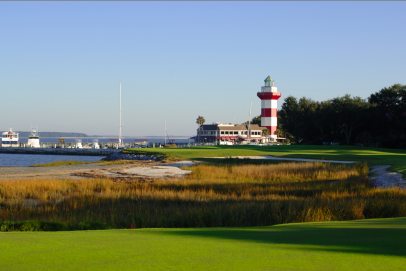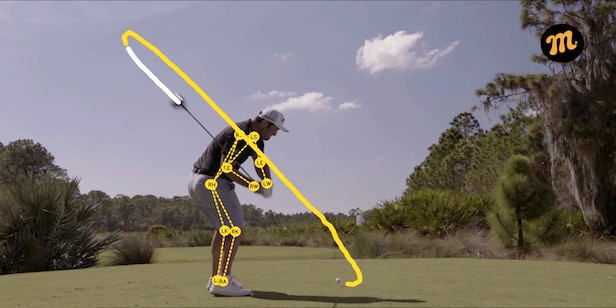Harbour Town is one of the tour’s low-profile gems—and this par 3 embodies Pete Dye’s genius – Australian Golf Digest

- by Admin
- April 19, 2024

The lowcountry of the Carolinas and Georgia—a sultry region of stoic live oaks, dank pine-tree jungles and sunbaked stretches of intracoastal marsh—is one of the country’s most distinctive environments. Located primarily on remote and difficult to access barrier islands, the lowcountry remained almost entirely unexplored by residential and resort developments until the early 1960s. Arnold Palmer introduced it to America almost all at once, along with its previously unseen style of golf, when he won the inaugural and televised Heritage Golf Classic in 1969 at the new Harbour Town Golf Links on Hilton Head Island.
RELATED: Can you read Harbour Town’s greens?
As attractive as the lowcountry is, the landscape is largely homogenous, not a great asset for creating varied golf holes. Courses are lucky if they can steal small sections of frontage along open rivers and wetlands before returning to the uniformity of their wooded interiors. What continues to make Harbour Town unique (and the site of the always-compelling RBC Heritage) is not the famous final two holes that explode upon the shore of Calibogue Sound but rather the individual character Pete Dye (in collaboration with Jack Nicklaus) was able to draw out of each inland hole. Fifty-five years after it was built, the par-3 seventh remains one of the most distinguished short holes in the lowcountry, no small feat.
THE HOLE
Most other architects know they would get skewered for creating a hole like the seventh, so they wouldn’t. But criticism, real or imagined, never deterred Dye. During the clearing of pines, a triad of large specimen oaks was discovered, arranged just far enough apart to fit a green within the apse. Dye did just that, creating a bean-shaped green that lays like a fallen hammock at their base, with the two oaks at the entrance forming a pair of goal posts that players must hit their tee shots through. The putting surface is elevated several feet above a field of sand creating a kind of floating island, and a water feature running diagonally in front and along the left adds an extra dimension, one horizontal layer upon another to offset the vertical focal points.
RELATED: America’s 100 Greatest Public Courses
A CHANGE OF COURSE
Though maddening when the oaks knock otherwise well-struck shots out of the air (sometimes into the sand, or worse), the artistry and whimsy have to be admired. But more importantly, the seventh represents all that makes Harbour Town historically important. The design was a sudden juke to the prevailing modernist trends of the 1950s and 60s when courses were getting longer and brawnier and more assembly-lined with outsize bunkers, greens and tees. Harbour Town was the opposite: diminutive, contained and quirky with small, uneven shapes, something irreconcilable with the momentum of the times.
Streeter Lecka
The seventh in particular was not just imaginative but architecturally insurgent, conceived in either madness or anarchy, a scant 4,500 square feet of sanctuary floating above rings of perdition secured at the price of nearly 200 yards. The guardian oaks could not have better announced the arrival of an artistic counter-culture had they been exclamation points, which in ways they were.
RELATED: The best Pete Dye golf courses, ranked
PRACTICAL MATTERS
Each of Harbour Town’s par 3s look and play differently—from each other and from other lowcountry designs, a remarkable achievement given the lack of interesting natural features to engage or any meaningful elevation change. Like the fourth and 17th, it orients to the southwest; like the fourth and 14th it plays to roughly 195 yards. That’s a recipe for sameness, but it’s hardly the case here.

While not as intimidating as the 14th, one of the more frightening par 3s on tour, the seventh is stout, playing to a stroke average of 3.09 over the previous 10 tournaments. While few players accrue penalty strokes here (as opposed to 14 where the water running diagonally along the right side of the green is a magnet), the deep, narrow green, perched like a platform, is difficult to hit. Knobs and hollows around the perimeter deflect shots that land off-center into difficult recovery situations, and year-to-year only half the field finds the green in regulation (only 44-percent hit the green in regulation in 2021). It is the essence of target golf, and the essence of what makes Harbour Town enduring and original.
(Green-reading map: Courtesy of StrackaLine)
More from Golf Digest  Courses The best public golf courses in Hilton Head Island
Courses The best public golf courses in Hilton Head Island
For more information on StrackaLine’s green-reading books (and a 25 percent discount for our readers), click here.
This article was originally published on golfdigest.com
The Latest News
-
December 22, 2024AFL legend Aaron Shattock placed in induced coma following freak accident while operating an excavator
-
December 22, 2024Test discard brings the heat after Boxing Day axing
-
December 22, 2024Australian cricket team at MCG: Near 60% win record, unbeaten for three years | Cricket News – Times of India
-
December 22, 2024Zheng to skip United Cup, focus on Aussie Open
-
December 22, 20242024 runner-up Qinwen Zheng pulls out of Australian Open lead-in event





